| ISOTYPE: International System of Typographic Picture Education: “Words Divide, Pictures Unite” | |||
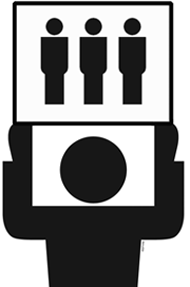 |
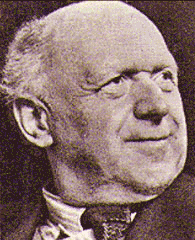 |
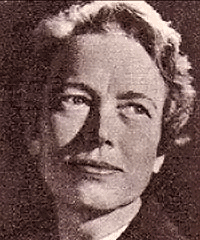 |
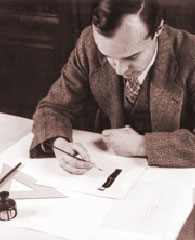 |
| TEAM ISOTYPE : Otto Neurath, Marie Neurath and Gerd Arntz | |||
| Otto Neurath Educating via Picture Language A visual program for displaying facts and quantitative information, the ISOTYPE system was born from research and theories of Otto Neurath (1882–1945), a Viennese philosopher, economist and social scientist. As a child he was fascinated by the function of Egyptian hieroglyphics—their forms and ability to communicate a story. This early influence was integrated into his life's work, the development of a system to pictorially organize statistics. During the 1920's Neurath was a leading figure in a circle of Viennese intellectuals known as the Logical Positivists. In 1929 he helped author the group's manifesto, The Scientific Conception of the World, The Vienna Circle. 1 The Positivists declared that philosophies founded in religion, metaphysics and ethics were merely expressions of feelings or desires and therefore lacked any cognitive sense. They asserted that true meaning could only be found in mathematics, logic, and natural sciences. |
In 1925 Neurath, while head of a housing museum, initiated The Social and Economic Museum of Vienna. The museum's purpose was to educate the general public about post-war housing by creating displays of social information. The new venue afforded him an opportunity to showcase his intellectual and educational ideals using his symbol-based language — an alternative to written language. By the early 1930's Neurath headed a team of 25 employees divided into four groups; Data Collectors: Comprised of historians, statisticians and economists. * Transformers: Visual editors and liaisons between the data collectors and the graphic artists. Graphic Artists: Illustrators who drew the symbols and artwork. Technical Assistants: Assisted in paste-up, coloring and photography.2 (Many thanks to Robin Kinross for help in editing the previous material.) |
Marie Reidemeister Neurath, Transformer* While working at the museum Neurath began his collaboration with Marie Reidemeister, who would later become his wife. Reidemeister was educated as a physicist, mathematician and also had attended art school. She and fellow senior transformer* Friedrich Bauermeister, organized the information into comprehensible formats, in a role that would be described today as a graphic designer. 3
|
Gerd Arntz (1901–1988) ISOTYPE Illustrator An essential member of the Neurath group was German artist Gerd Arntz who joined the ISOTYPE team in 1928. Well educated and from a comfortable background, Arntz became an activist who embraced the same socialist ideals as Neurath. Artistically he was influenced by the Expressionist and Constructivist movements, expressing his socialist values through primitive wood block printing. |
 Images: Otto & Marie Neurath Isotype Collection, University of Reading |
|||
 |
 |
 4 |
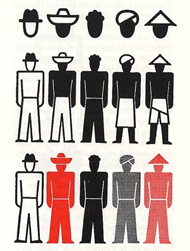 |
Visual education was always the prime motive behind ISOTYPE. It was not intended to replace verbal language, rather it was a “helping language” accompanied by verbal elements. Neurath was deeply convinced that his "world language without words" would not only enhance education but facilitate international understanding. |
Neurath rejected histograms with numerical scales, pie charts and continuous line charts for a method that displayed facts in a more easily understood form, numbers were represented by a series of identical pictorial elements or signs, each of them representing a defined quantity. While his contemporaries showed variation by altering the size of their symbols, Neurath increased or reduced the quantity of symbols, each symbol representing a specific amount. Neurath called these "amount pictures" or "number pictures." |
Neurath's writing and imagery reflected the cultural blind spot of his era. Would Neurath's ISOTYPE symbols today be questioned for stereotyping / assumptions about women, family and race? "A specially important part in the ISOTYPE system as it is presently used is taken by the pictures giving 'statistics' or the relation between amounts of different things— amount pictures or 'number fact pictures' To most men the reading of long lines of numbers is a great trouble— they put down a book when they see if has in it numbers or curves. But pictures are an attraction. This fact gives the ISOTYPE system a special value for all sorts of education. |
It is not necessary for every reader of ISOTYPE pictures to have a complete knowledge of all the rules of the ISOTYPE system, because without being conscious of the reason he gets the effect of the pictures. It is the same with the reading of a good play or are well-balanced bit of writing. there is not need to have a knowledge of the art used in producing such effects to get pleasure from it. We may even say that almost no knowledge at all is necessary of the 'words' of the picture language—the signs—or of the rules for talking this language—the system." 5 |
| Continuing the ISOTYPE Legacy | |||
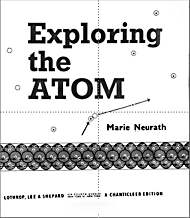 |
 6,7 Marie Neurath Sketch and book cover
via Isotype Revisited 6,7 Marie Neurath Sketch and book cover
via Isotype Revisited |
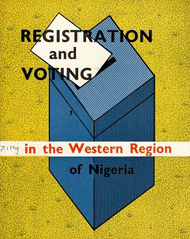 7 |
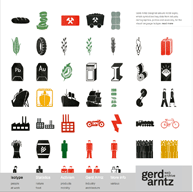 |
The ISOTYPE team, interrupted by Austrian political upheaval in 1934, moved to The Hague in The Netherlands. By 1935 the team had created a name for their new symbol language, ISOTYPE. In 1940 both Neurath and Reidemeister fled the Nazi invasion of Holland to England, where they spent a year in internment as ‘enemy aliens.’ Marie and Otto married and resumed their work in Oxford, founding the ISOTYPE Institute. |
After Otto died in 1945 Marie carried on their work until the 1960s mostly through production of educational books for children. Her publications clearly explained complex subject matter, often about the physical world, scientific discoveries and the people of non-Western cultures. The success of her work had a major impact upon the children's publishing industry as well as institutions abroad. As director of the Isotype Institute, she traveled several times to West Africa to consult on public information initiatives with countries who were gaining their independence from Great Britain. After 1971 Marie Neurath dedicated her time to documenting Otto's work and writings until her death in 1986. |
What is the ISOTYPE legacy for the 21st century? The methodology of strong problem solving, a visual style for clear, direct communication plus a commitment to using design for the betterment of society. Mr. Eric Kindel, senior lecturer at the University of Reading lead a team research project, Isotype Revisited. Working within the University of Reading's Department of Typography and Graphic Communication's own Otto and Marie Neurath Isotype Collection, the publicly funded project has recorded a wealth of information and images can be found at their site. Shown Above: Voter Registration in the Western Region of Nigeria. Booklet cover, Marie Neurath, Isotype Institute, 1955. |
Gerd Arntz drew over 4,000 ISOTYPE symbols which were reproduced by linoleum block prints. His direct and clean graphic style helped set the tone for future symbols in the coming decades. When Otto and Marie fled to England in 1940, Arntz stayed in The Hague and applied his style to symbols for the Dutch Foundation for Statistics. There is an extensive history and archive of Gerd Arntz's symbol design on line at The Gerd Arntz web archive. We highly recommend you see this informative and well designed site. |
| Further Readings | |||
| More Reading on ISOTYPE Isotype Recent Publications by Robin Kinross A discussion of where the ISOTYPE came from and who did the work. |
Online copy of Neurath's International Picture Language, 1936. Online Copy of Neurath's The Modern Man in the Making. |
Graphic Communication Through Isotype, (Link here) Staff and students of the Department of Typography and Graphic Communication of the University of Reading and staff of the University Library. 1975, University of Reading, Department of Typography and Graphic Communication. |
Related Works Rudolf Modley Handbook of Pictorial Symbols (Dover Pictorial Archive Series) Modley was a student of Neurath who brought the Isotype theories to the US. He produced a number of large dictionaries and handbooks. |
| Footnotes | |||
1 The Vienna Circle, Wikipedia, 2 The Significance of ISOTYPE, |
4 Image Source 5 Quote 6,7 Isotype Revisited, University of Reading. |
Note: All images by permission of Otto & Marie Neurath Isotype Collection, University of Reading. | |
| Copyrights | |||
| ©2012 Designhistory.org | |||
